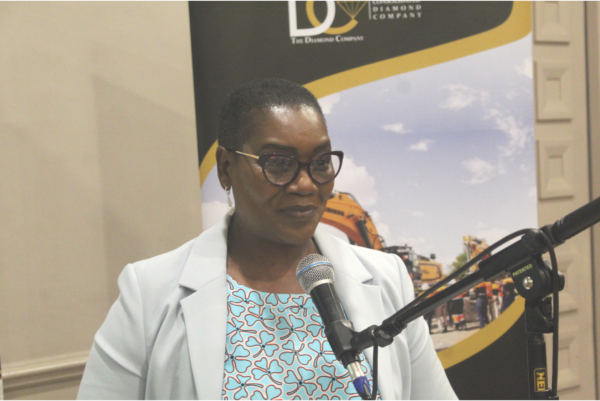Zimbabwe Miners Federation (ZMF) President Ms Henrietta Rushwaya has urged the government (in its quest to realize a sizeable revenue from the gemstone industry) to take lessons from Zambia, Brazil and Tanzania on how they have managed to promote their gemstone industries.
Rudairo Mapuranga
Speaking at the 21st Skills for Development for the Gemology Sector Conference held at Jameson Hotel in Harare yesterday, Madam Rushwaya said the only way for the government to fully realize the significance and potential of the gemstone sector is to formalize them and put them into the mainstream economy.
“If managed appropriately, natural resources will benefit citizens and contribute to the fiscus including supporting employment.
“The government is therefore urged to design laws, policies and practices that support and enhance gemstone mining,” Rushwaya said.
She said for the formalisation, regulations and professionalisation drive it was pertinent for the government to consider taking lessons from Zambia and Tanzania as well as Brazil.
Rushwaya said in Tanzania, the government’s 2010 Mining Act commits the government to facilitate, support and promote increased participation of Tanzanians in gemstone mining including developing Tanzania as a gemstone Centre of Africa, ensuring that medium and small-scale gemstone mines are entirely owned and operated by Tanzanians and encouraging local investors in gemstone mining.
“Tanzania has taken concrete steps to formalise citizen mining since 1997, including through simplifying licensing procedures, improving access to land and expanding the resource available to citizen miners.
“The 2010 Mining Act establishes primary mining licence for citizen mining. Procedures for obtaining primary mining licenceless demanding and licences granted by zonal offices (flexible licencing regime).
“Tanzania’s evolution reflects an increasing recognition of and adaptation to the needs of citizen miners.
“Furthermore persistent and meaningful engagement between stakeholders supports progress towards the government’s citizen-centric vision for the gemstone industry,” Rushwaya said.
For Zambia, she said, “Following nearly 20 years of poor performance under state control, the government ceded its management responsibilities in 1996 and majority equity to Indian – the Israel consortium Hagurato to encourage greater investments in Kagem.
“The company capitalized the project to a scale rarely observed in the coloured gemstones industry making major upgrades to extraction and processing techniques to producing 30 million carats of emerald making it the single largest source of coloured gemstones by volume in the world,” Rushwaya continued.
As a case study for Brazil, Rushwaya said, “The government supports cooperatives to promote garimpeiro.
“These organizations have been instrumental in lowering the bureaucratic barriers and obtaining licences, bargaining for access of land,” she said.
In conclusion, Rushwaya said that the government of Zimbabwe must Identify areas of comparative advantage. She said the government should support skill development and technology transfer by supporting the establishment of gem labs and training centres that operate to international standards.
She said there was a need to come up with Beneficiation hubs giving the example of Thailand which cultivated a reputation for specialized knowledge and craftsmanship. Thai lapidaries are recognized for their quality, ingenuity and specialized cuts and expertise in colour treatment.
Rushwaya also urged the government to have Financial support-lending facilities for the gemstone industry.





